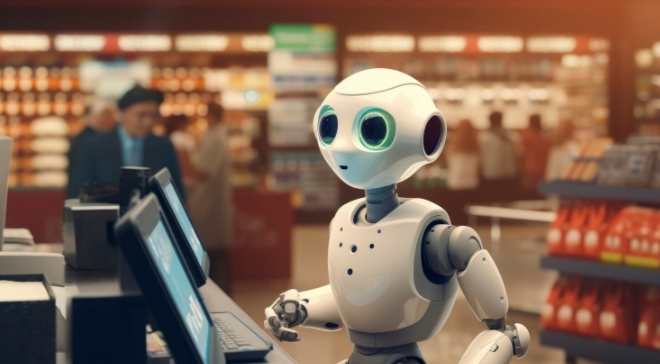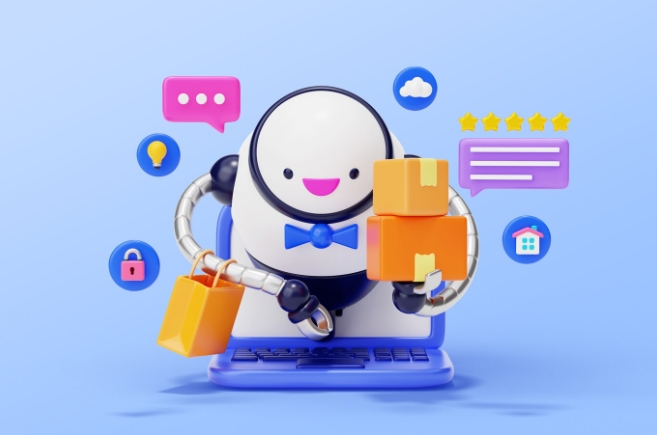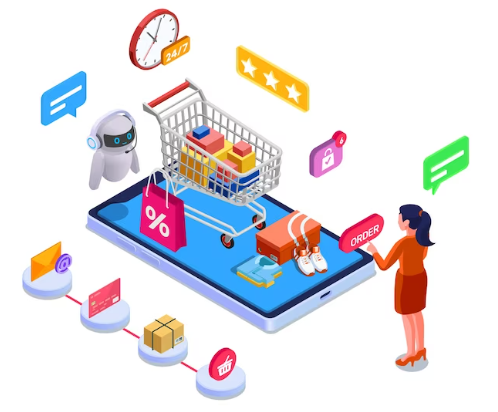Top 3 Real-life Retail Chatbot Examples
Chatbots are a boon to retail industries. We must know that for any retail business, prioritizing their customers is among the best methods to excel in the market. The introduction of chatbots to the business has drastically enhanced the ability to serve customers. This is the reason why there is an increase in the usage of chatbots in retail businesses. So, if you think that you are the only one to think of getting a chatbot for retail. Then, it's not true. Besides, not having one can make your brand fall apart from the competition.
Therefore, let's quickly dive into the article and disclose some best real-life retail chatbot examples to boost your sales.
Why Retail Chatbot Is Important for Business?
If you are an online retail owner, you have to answer the same queries repeatedly for different customers. This sometimes seems tedious. However, AI-based chatbots never get bored. They can respond to the same question for infinite times. Hence, they provide you room to wrap your head around other necessary tasks.
Nowadays, chatbots are in trend for being cost-efficient and delivering better and quicker solutions. On top of that, chatbots also help in providing real-time 24/7 customer support, increase customer engagement, and reduce operational costs.

The Most Successful Retail Chatbot Examples
Chatbots have come a long way since they were first introduced in the market. They have significantly increased the conversion rates for many e-commerce websites. Here is a list of the top 3 retail chatbot examples that are leading the industry.
1 Aveda Booking Chatbot
Aveda is a botanical hair and skincare brand. It collaborated with Master of Code to create an Aveda chatbot to lend a helping hand in appointment bookings. It is one of the best examples of conversational AI chatbots.
As a result, it increases the booking conversion rates by 33.2%. By filling the gap of automation in Aveda, Aveda's chatbot improved the online booking system and enriched the customer's shopping experience on the platform.
Features:
- Engaging conversational design.
- Give logical solutions to users for a better booking experience if they type unexpected inputs during the booking process.
- Custom event tracking and reminders.
2 H&M’s Digital Stylist
H&M is an international fashion and clothing brand that created a chatbot on Kik, a famous messaging app with more than 300 million users.
H&M chatbot asks a series of questions to the users to understand their style and preferences. Once the user answers all these multiple choice-based questions, the bot builds a style persona for the individual. It then suggests personalized outfits, along with the total price of all the items included in that outfit. This created a personalized shopping experience for every single user.
Features:
- Gathers customers' data to use for retargeting efforts.
- Streamlines the shopping and sales process.
- Provides outfit options based on your taste and style.
3 Sephora Virtual Assistant
Leading the beauty stores globally, Sephora was one of the first cosmetic retailers to introduce chatbots on Facebook Messenger and Kik. It will first ask the customers a handful of questions and then save the time of users by only recommending what they need.
Moreover, it not only improves the shopping experience of customers but also helps users by providing makeup tips and tutorials. Besides, users can show the bot an Instagram image of the look they want and the bot will help them to create a similar look with Sephora products.
Features:
- One-to-one chat experience.
- Personalized product suggestions.
- Find products by detecting and matching products of images taken by users.
Best Practices to Use Retail Chatbots Examples
Being an advanced technology, chatbots have multiple advantages for both the seller and the customers. So, let's understand the benefits of using chatbots in the retail sector.

1. Personalize the customer experience
When chatbots are integrated with business systems like customer service-providing tools or marketing automation software, they use the relevant information to provide personalized results and suggestions. Basically, chatbots engage with customers through a one-on-one conversation. By this interaction, firstly they gather personal data and preferences of an individual and then suggest personalized suggestions and solutions. Also, chatbots have multilingual support. It allows them to answer queries in the regional language of the customers and helps expand the reach of the brand.
2. Deal with customer queries & FAQs
Chatbots are programmed to answer the most common queries of the customers. A human can get tired of answering the same questions again and again. Though, AI-powered chatbots never lose their interest in assisting you with the same query even if it is the 1000th time. However, NLP-based chatbots in retail are able to understand queries that require deep processing. These chatbots have the ability to figure out the user's intent even if you type the question differently than what is fed into the database. They provide instant and accurate responses to improve customer satisfaction. This eliminates the need to wait for human support.
3. Increase sales and conversions
Businesses can generate more leads when they allow their customers to have conversations with the chatbots on the website and application. Bots increase leads by interacting with the customers and directing them to the sales team for on-spot sales conversion. Chatbots can also guide the users in their buying decisions and hence, increase conversion rates. For instance, an appointment booking chatbot helps customers to schedule appointments when the sales team is unavailable.
4. Take bookings/reservations & orders
Many chatbots are specially designed to book appointments, reservations, or orders. On top of that, they take as well as track the orders of the users. Chatbots are great digital assistants to help with scheduling appointments in no time. The best thing about chatbots is their availability at any given time. They can handle booking requests and help with queries around the clock, all year round. The bots have suitable efficiency and accuracy required to minimize human interference. So, there are no chances of error or clashing of two or more appointments at the same time. Besides, they send personalized reminders for upcoming appointments before deadlines so you don’t miss your pre-booked session.
5. Gather customer data
There is no room for doubt that data is the main element of marketing. The more data on customers a company has, the more successfully customers can be retargeted. Despite that, existing customers can also be engaged with regular notifications and updates. Unlike the old method of filling forms, chatbot is an outstanding way to collect customer data via interactions. Chatbots engage users in natural conservation and put together all the information they get through the interaction. This monitored data is used to gain insights. The information that bots can gather through are-
- Most visited page by the customers
- Location
- Preferences
- Previously purchased products
- Languages
- Wishlists
6. Collect customer feedback
A brand needs to know the part where they are lagging behind. For that, taking customer feedback is necessary. Chatbots for retail can conduct surveys and take feedback. Chatbots also collect great in-depth information about customers' experiences through conversation. Retailers can use this feedback to improve their customer services, products, and overall performance in the marketplace.
Future of Retail Chatbots: Key Trends to Watch in 2023
Nowadays, chatbots are very popular. In upcoming years, chatbots are going to be a mainstream method for customer support services. Perhaps, retail chatbots could become a big part of modern organizations in the future.

Features:
- According to Juniper's research report, the number of voice-assistant users had increased to 8.5-9 billion by 2023. In addition to this, a chatbot with a voice-assistant will be the next big thing.
- AI chatbots will become more intelligent.
- Chatbots can be seen to automate payments.
- Apart from handling customer queries, Chatbots can handle enterprises internally as HR, internal desk help, and much more.
Takeaway: Getting started with an e-commerce AI chatbot with a Retail Chatbot
Let's summarize the whole topic; Retail chatbots are automated software that is used in the retail industry. They create a human-like digital interaction with the customers to gather insights and use those insights to generate sales.
Providing efficient customer support service and increasing lead conversion rates is the main role of retail chatbots. Nevertheless, you need to keep some factors in mind before getting a chatbot for your website:
- Understand your target audience
- Defining the objectives of your business
- Starting with simple and efficient chatbots and making improvements gradually
- Incorporating personalized recommendations
The retail chatbot examples have multiple functionalities and features to offer to the users. If you are looking around for a retail chatbot that can scale up support with complete automation, ChatInsight AI is the most suitable option for you. ChatInsight is a knowledge-based AI chatbot powered by ChatGPT. It can be trained using the customs inputs and then it adapts to any context and other relevant data of the users. It furthermore provides you assistance with IT internal Github base, employee onboarding handbook, company wiki, help center, and market conversational chatbot. As a result, ChatInsight is surely one of those chatbots that can take your retail business to a whole new level.



Leave a Reply.